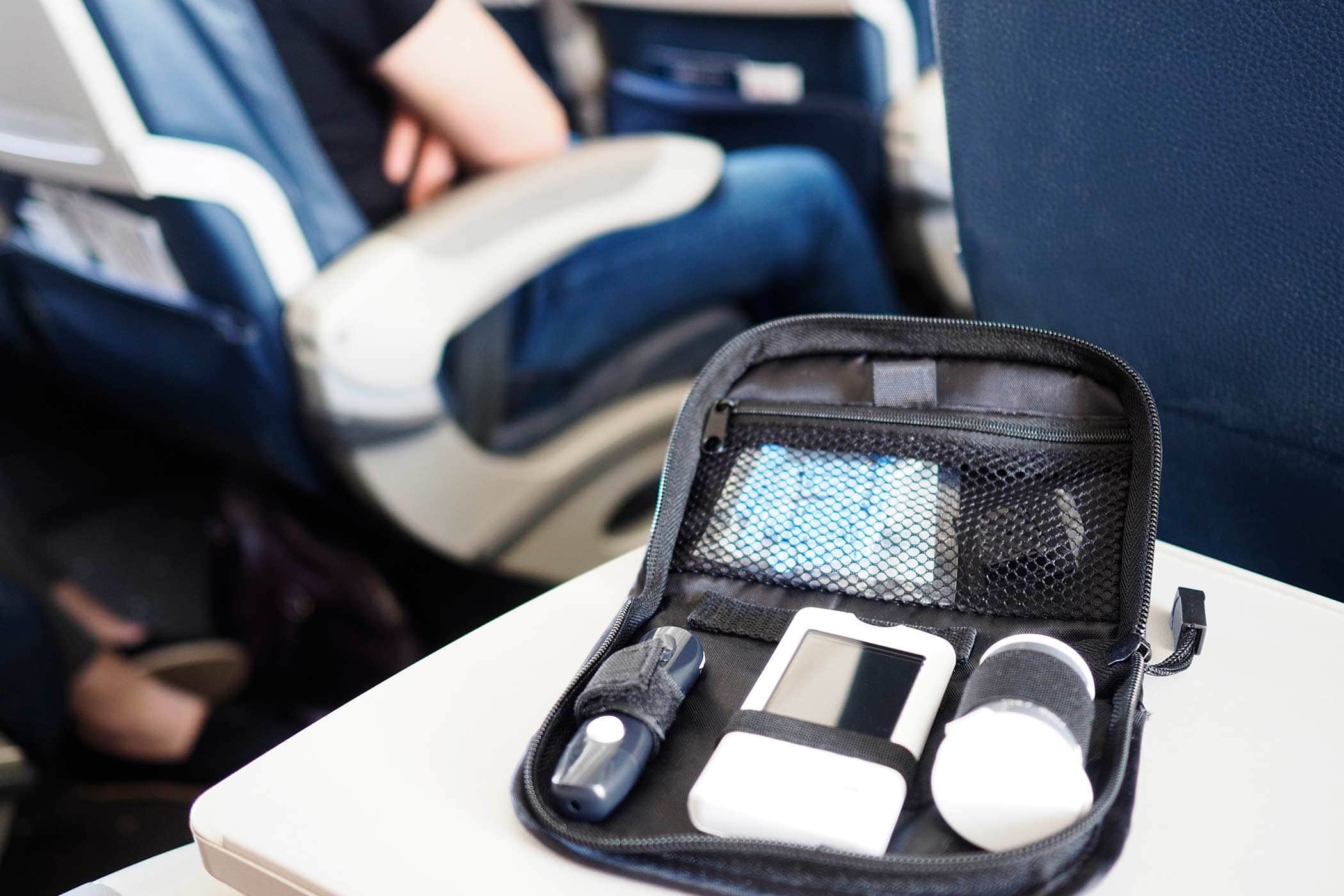Travelling by plane when your are diabetic?
Travelling by plane when your are diabetic?
In order to fully enjoy their holidays and the pleasant memories they provide, people with diabetes must anticipate and prepare for them with care. This is especially true for air travel.
Bringing insulin on board a plane is officially permitted; however, passengers with diabetes must be able to present a prescription issued by their doctor stating the illness and the need to carry certain devices and accessories. Consult your airline company in advance to check if special measures apply.
In addition, it is recommended that the following items be carried on board:
-
Blood glucose test logbook
-
Diabetes card
-
Vaccination record
-
Spare blood glucose meter and back-up equipment for your insulin injections
-
Travel medicine kit (strips, disinfectant, antidiarrheal medication, medication for fever, vomiting and nausea, etc). The composition of the first-aid kit depends on the individual situation, the destination, and the availability of medical care at the holiday location.
Carry all necessary equipment in your hand luggage with plenty of extras in case of any delay. Opened insulin ampoules can be stored at room temperature for a few weeks. They should of course be protected from exposure to high and/or low temperatures. At low temperatures (below approx. 5 to 10°C) or at very high temperatures (above 35°C), the reliability of the strips is no longer guaranteed. Protect your meter from direct sunlight. Check your medications for storage advice.
Adjust treatment when travelling across time zones. Any hypoglycemic medication may be taken in the usual dose as prescribed, depending on the local time. Insulin injections may also be given without change, provided the time difference is no more than 3 or 4 hours. When travelling by plane across several time zones, adjustments are necessary. For flights heading east to west (eg, from Europe to the US or South America), the day is longer, meaning that the dose of basal insulin must be increased. The addition of a meal requires an extra dose of rapid-acting insulin. For flights from west to east (eg, from Europe to India, Japan, or Thailand), the day is shorter, meaning that it is advisable to reduce the basal insulin dose (See table). The situation is obviously reversed on the return flight. Please contact your doctor or diabetologist if you have any questions about adjusting your treatment.
How much basal insulin do I need per hour?
The daily basal insulin requirement is divided by 24 (number of hours per day).
For a presumed requirement of 16 U per day, the hourly requirement corresponds to 16/24, (ie, two-thirds U or 0.6 to 0.7 U per hour). For a requirement of 24 U per day, this corresponds to 24/24 (ie, 1 U per hour).
What is the time difference for my journey by plane?
For example, -6 hours in the direction of New York, +8 hours in the direction of Tokyo.
What does this mean for my basal insulin requirement?
For a daily requirement of 16 U > 0.6 U per hour > New York 6 h × ⅔ U = 4 U
> Tokyo 8 h × ⅔ U = 5 U
Daily requirement of 24 U > 1.0 U per hour > New York 6 h × 1.0 U = 6 U
> Tokyo 8 h x 1.0 U = 8 U
Do I need a higher or lower basal insulin?
If you are travelling eastbound, a reduction in insulin is required (as the day is shorter). For westbound flights, the insulin dose needs to be increased (the day is longer).
Example 1:
For a daily requirement of 24 U, an additional 6 U of basal insulin must be injected on a flight to New York, making for a total of 30 U; on the return flight from New York, 6 U less is required, making for a total of 18 U.
Example 2:
For a daily requirement of 24 U, 8 U less basal insulin must be injected on a flight to Tokyo, making for a total of 16 U; on the return flight from Tokyo, an additional 8 U is required, making for a total of 32 U.
Be aware that hypoglycemia is an incident that can seriously disrupt your flight, especially if you are usually more active than in the prolonged sitting position often imposed by a long-haul flight. To avoid having an episode of hypoglycemia, strictly observe the rules, as you would when driving a car. For mealtime, calculate a dose of rapid-acting insulin slightly below the usual dose and do not inject yourself without being sure that the meal tray will soon be in front of you.
